Sample passport is established by the state veterinary services of a particular district or city, and the corresponding order is issued. Passport forms are sold at veterinary clinics or pet stores.
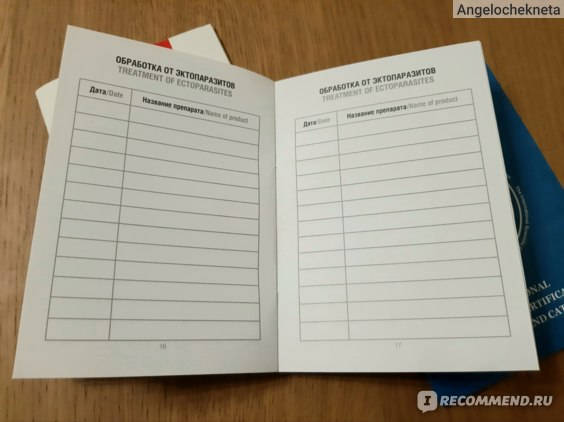
- Step 1: Learn the rules of bringing an animal into the country of destination
- Step 2: Buy a ticket and reserve a seat for your pet
- International veterinary passport for animals / Pet passport. Agrovetzaschita – review.
- Important Information
- How to fill in the information in the document?
- How do I fill out the items on the veterinary passport?
- Item called "Pet's name."
- Item called "Kind of pet."
- Item called "Breed."
- International animal passport / Pet passport. Agrovetzaschita – review
- What items in the passport the doctor fills out
- Outpatient card number
- Chip Number, Barcode
- Information about the date of chipping and the location of the chip
- "Veterinary certificate" – "Registration" section
- Vaccination information
- Example of filling in the international passport – photo
- Vaccination information.
- Date of registration
- Vaccination information
Step 1: Learn the rules of bringing an animal into the country of destination
There is basic information on the Rosselkhoznadzor website, but it's better to additionally study the information on the website of the veterinary or agricultural inspectorate of the country you are going to (in my case – Turkey). The basic rules are the same for everyone:
- 10 weeks of age or older;
- Veterinary passport;
- Chip;
- Vaccinations and treatments;
- No serious chronic or infectious diseases (such as distemper, rabies or cancer);
- Authorization document (veterinary certificate or international certificate).
But each state may have additional regular requirements or innovations related to the epidemiological situation.
If you are traveling to CIS countries – Turkmenistan, Uzbekistan, Tajikistan or Moldova – a veterinary certificate according to Form 1 will be sufficient for export, and for Customs Union countries – Belarus, Armenia, Kyrgyzstan and Kazakhstan – a Customs Union certificate. For other countries you'll need to exchange the certificate for an international certificate under Form 5a (more details below), and in the EU – the Euro certificate. If you have a connecting flight, check the requirements of your final destination.
Step 2: Buy a ticket and reserve a seat for your pet
On some airlines (such as Red Wings), you can book a seat for your pet right away, and sometimes even pay for it – at a flat rate. This is much more convenient than the second option: when you buy a ticket and then separately request a reservation for the animal from the carrier (as in the case of Aeroflot or Turkish Airlines). In this case the company may refuse you, even with paid ticket in hand. The thing is that many carriers have a limit for animals in the cabin – from 3 to 10 – and restrictions on the species: if the flight is already registered in the cat, the dog can not be taken, even in the baggage. In the cabin you can take a cat or a dog (less often a ferret or a rabbit), which weigh no more than 8 kg together with the carrier. In other cases a pet travels in the luggage in a special compartment – but there are companies that do not allow transportation of pets in the luggage – for example Air Serbia. As a rule, one person can take no more than one or two pets, in the cabin and luggage. However if you want to take both pets in the cabin it's only possible in one carrier and under the condition that they all weigh no more than 8 kg together. Often airlines don't take brachycephals – that's cats and dogs with flat faces – in the cabin, and some refuse to carry fighting breeds (like Pegasus). The fact is that these animals often have breathing problems due to pressure or temperature fluctuations, which means that the carrier bears a big risk.
All these requirements are in a special section on the website of the airline. For example, this is what it says on the site of "Aeroflot":
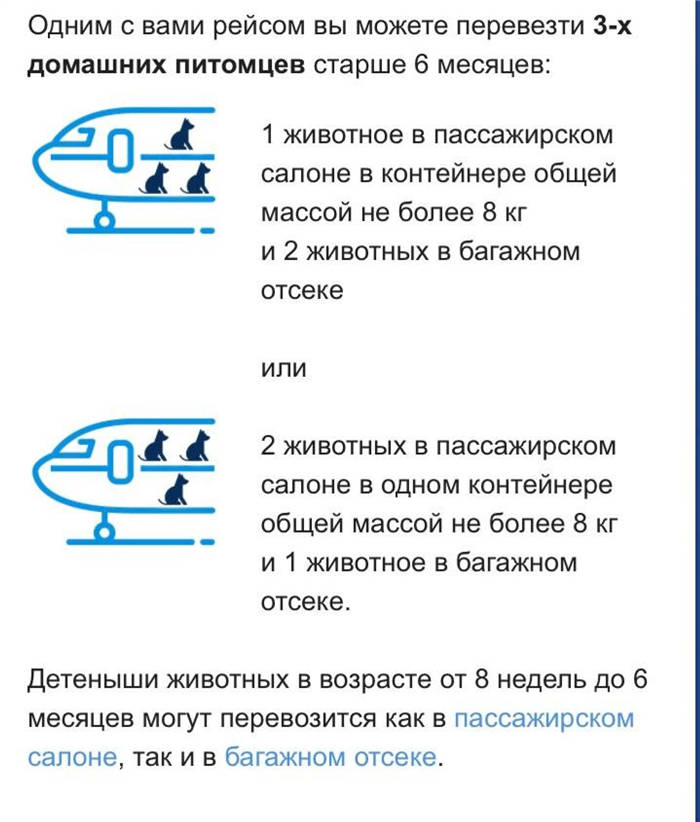
There are also pet fares there. If you're worried that there may not be a seat for your pet, you can do two things:
- Book a ticket without paying, confirm the pet's transportation, and only then pay. As a rule, a reservation is valid within a couple of hours, but some aggregators or air carriers may extend it from 24 to 72 hours for a fee (within 1000 rubles).
- Come to the office of the airline, check with the manager for which flights there are seats for a cat or dog, buy a ticket and reserve a seat. This option is suitable only for those who live in Moscow or St. Petersburg. At the same time at the offices of popular carriers – such as Aeroflot or Turkish Airlines – you may encounter hours of queues, and in a foreign airline you cannot pay the ticket with a Russian card.
International veterinary passport for animals / Pet passport. Agrovetzaschita – review.
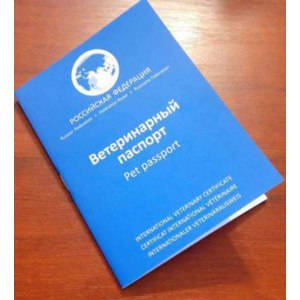
Let me summarize right away: my cats are mestizo, veterinary passport is required to take them from one country to another. I studied all the information in detail, meticulously. I share my experiences.
The most important thing is that there is no a single standard for such passports. This, to be honest, was a revelation for me, because it is inconvenient (boxes to fill out may differ in name/location). I think that there should be there should be a standard. The best known companies that issue animal passports are Api-San, Zoovet, Univet, and Agrovetproof. Also, some veterinary clinics print passports in print shops so to speak under their "brand.".
In my case, there are two reasons: taking the animal to another country, as I wrote above and vital vaccinationSince my animals were taken from the streets. Here I will explain a little, for those who are not in the "subject". If you take a kitten or adult cat from the street, then vaccinating them is mandatory.. Even if the external appearance of the animal clean and cute, and you can tell by sight that "there are no diseases. This is far from true. Many animals can get sick on their own, survive the disease normally and remain carriers. And many cat diseases may not show up right away. So don't wish money on it.
Of course, a vaccination plan will be given to you veterinarian .. I'll tell you about my experience.
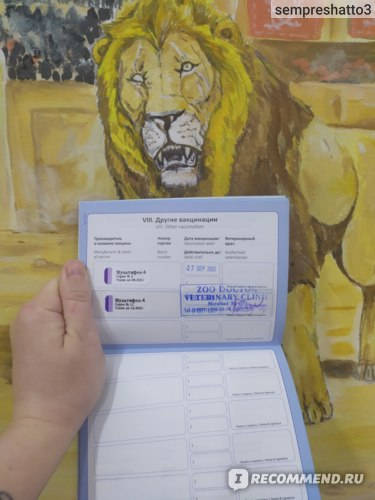
Two weeks before the vaccine for Panleukopenia (probably one of the most terrible diseasesthat can be in cats), calcivirhosis, chlamydia and rhinotracheitis treated animals against fleas, worms. Drugs choose for yourself. I had the most expensive and effective. Also here I would not advise to save money. The same cheap drugs from fleas stinks a lot.
Important Information
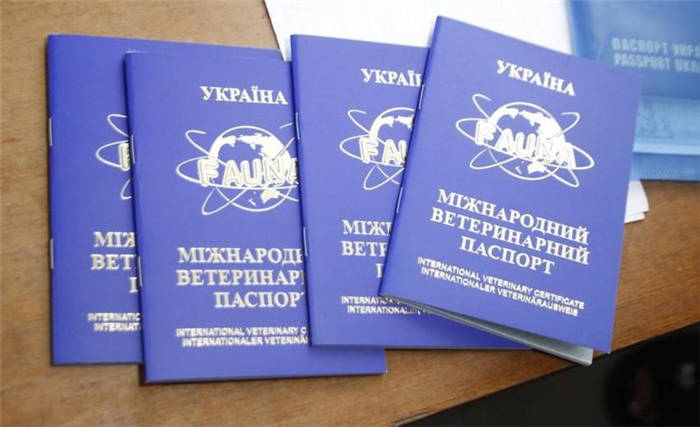
The sequence of the lines of information on each veterinary passport may vary. Before you fill it out, read the items carefully. Read them and check the sequence. So as not to accidentally enter the data in the wrong line.
How to fill in the information in the document?
The paper should be filled out using typed letters. If there are boxes with information, then one letter must be placed in each box.
In the international type veterinary passport the information must be entered in Russian. At the same time, it is very important to provide a transcription. In particular, we are talking about the paragraphs with the information about the name of the animal. Name of the owner. Address where he lives. And so on.
It is quite easy to get what you want. The most important thing is to go on the Internet and use some service that transcribes from Russian to Latin.
In most cases, veterinary passports are filled out by doctors in veterinary clinics. However, you do not have to wait for them. You can enter most of the information yourself.
How do I fill out the items on the veterinary passport?
Item called "Pet's name."
If you purchased a purebred animal with a pedigree and documents, you must transcribe its official name from there. It is important to write the full name. Never cut back. Otherwise, it can have negative consequences. Up to the fact that the vet passport will be invalid.
If your pet does not have a breed, and was picked up on the street, write in its name what you actually call it at home. You won't have a problem with that. And with a fraction ("/") you can put the name in English.
Item called "Kind of pet."
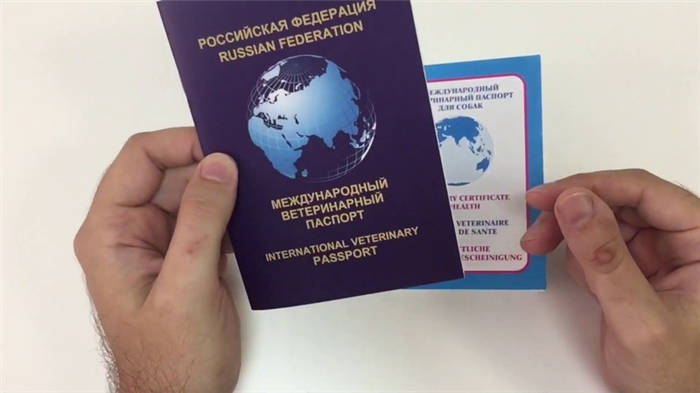
This is where you need to specify the subspecies of your pet. According to scientific definitions. Regardless of the gender of the pet.
If you travel abroad with a Russian veterinary passport, duplicate the type of pet in English. Do this with the words "Dog, Cat.
Item called "Breed."
If you have official documents for your pet, that's a very good thing. You can enter the breed information from there. That said, it's important to write in the full name. You can't write "York." The correct name would be "Yorkshire Terrier." And so on.
If the pet was found on the street, it will probably be difficult to determine the breed. You will need to go to a veterinary clinic and consult a doctor. He will be able to find out at least the approximate identity of your pet.
If it turns out that the pet has a mix from several breeds, the information is filled out accordingly. In particular, you will have the opportunity to write "Métis". Or, if there is no breed, "non-breed."
If you are able to find out whose breeds are mixed in your dog, you can enter the information as follows. "Métis of a Totterer and a Pomeranian Spitz." And so on. Remember that it is preferable to write the breed in Latin letters.
International animal passport / Pet passport. Agrovetzaschita – review

Let me start by saying that every cat / cat needs a veterinary passport. There are no options here. It has many perks that do not apply to vaccinations, but about that a little later. Now I want to write about getting a passport and what are the differences between the passports from Api-San, Zoovet, Univet and Agrovetzaschita.
- with Yumochka the Nibelung: the woman who picked her up on the street and treated her, got her passport on the first day at the vet clinic (passport from Zoovet);
- with a Maine Coon Viking: we took the first passport at 3 months and the second at 4 months (I'll explain below why) (first Agrovetzaschita passport, then Api-San);
- With the house-pet Tisha: we got him at the first vaccination (digression for those, who have read the review about Tisha – the doctor said, that he's 1 year old, not 7 month old) (Univet passport).
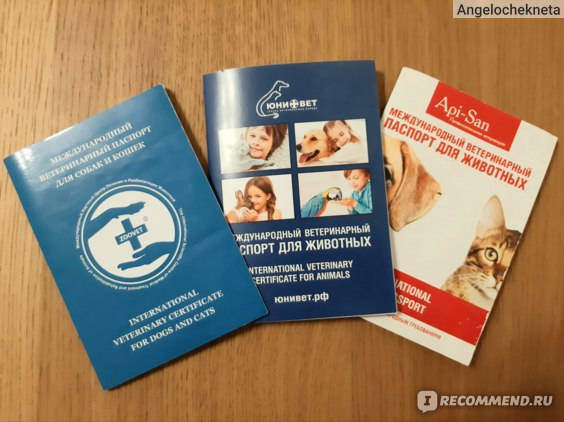
- Breeder option:We got Viking from a kennel. The passport at the time of our arrival for him was in a terrible condition, as if it had been poured coffee and mashed in food, and the data on vaccination did not comply with international rules (you have to stick special stickers from the bottle, and also have a stamp and signature of vet). In our case, there were only big stickers from the package, and there were no supporting records. That is why we had to buy the vaccination, as well as the veterinary passport, all over again. By the way, replacement of the veterinary passport is free! That is, if you received an invalid passport (normal breeders / kennels will never let you down with vaccinations, but there are those who are more important just to sell the pet and not to care about their health), then the vet clinic will issue a new one, without additional charge. The original one was from Agrovetzaschita, but they changed it to Api-San.
- The option of buying it at the veterinary clinic: Is purchased separately from the vaccination. Most often at the reception of the clinic or in a veterinary pharmacy. Cost in Moscow and Moscow region varies from 50 to 100 rubles. Have not met more expensive. Purchase passport is not a mandatory indication for immediate vaccination, and better to buy it before the primary vaccination.
- Option with pet stores: You can buy a passport in most pet stores. In "Four Paws" there is definitely, the cost is 50 rubles. Specially checked with our department. They sell passports from AVZ.
What items in the passport the doctor fills out
After filling the basic information about the cat, the remaining items of the veterinary passport shall be filled by a veterinarian according to certain rules. The veterinary passport is valid only if it has stamps certified by the signatures of veterinarians.
Outpatient card number
Not every form has this item, and it only makes sense to fill it out if the animal is regularly seen by doctors from the same clinic.
Chip Number, Barcode
To be filled in immediately after chipping at the vet clinic. Chipping is the radio-frequency identification of an animal by implanting a microchip, which is a small electric circuit with a unique fifteen-digit code according to ISO 11784/11785. The first three digits are the country code, the next four are the producer code, and the last one is the animal's ID.
Each chip comes with three to five barcodes, one of which is pasted into the passport.
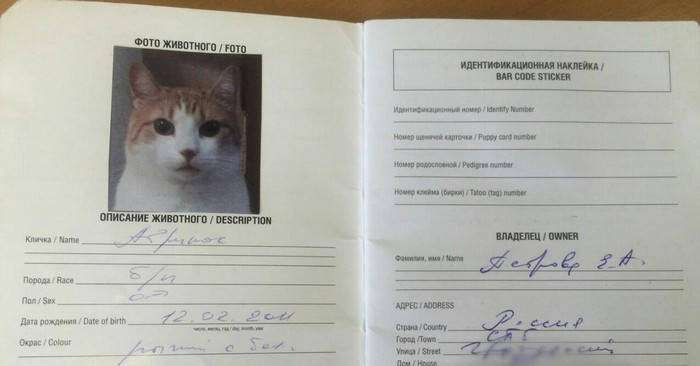
Information about the date of chipping and the location of the chip
The date is entered immediately after chipping. The microchip is usually placed under the skin at the withers or the shoulder blade.
Over time the chip may shift, so you should take a larger body coverage when scanning your pet.
You can determine if a cat has a microchip by taking an x-ray.
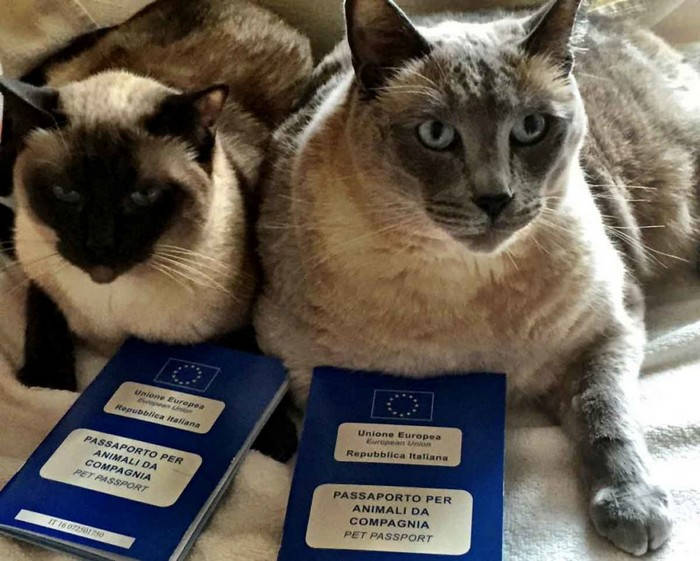
"Veterinary certificate" – "Registration" section
The section is to be filled in only after administration of rabies vaccine. The column "Registration" contains the name and initials of the doctor and puts two stamps: the medical institution and the personal seal of the doctor, certified by his signature.
Vaccination information
If the passport form is universal, the columns for vaccines include the series number, date, type of vaccine and doctor's stamp. If the passport is specifically for a cat, the headings show the purpose of each box.
Example of filling in the international passport – photo
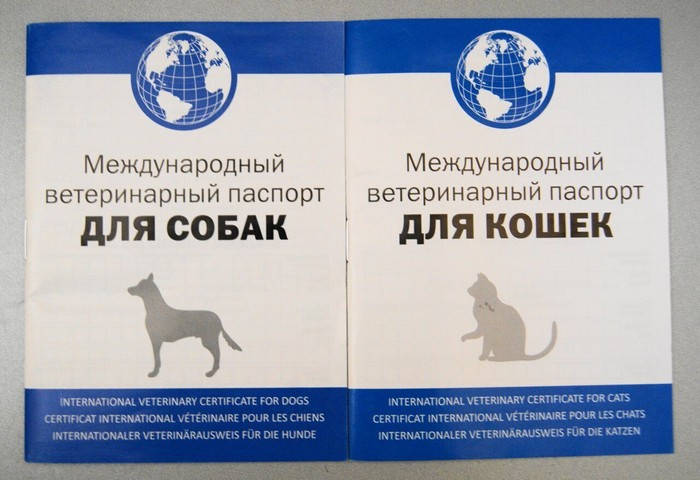
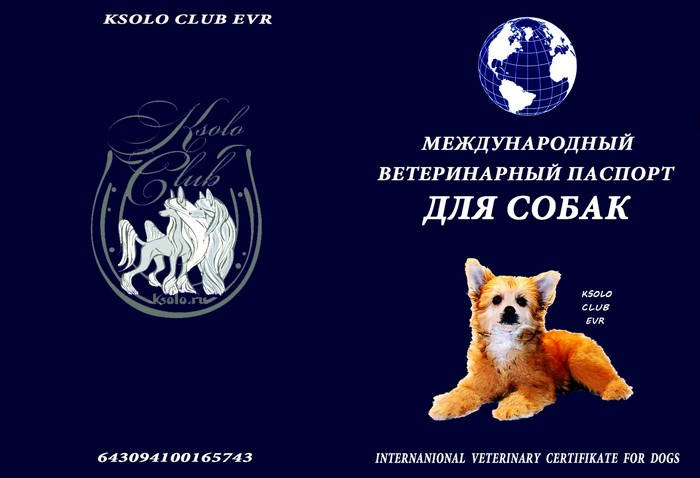

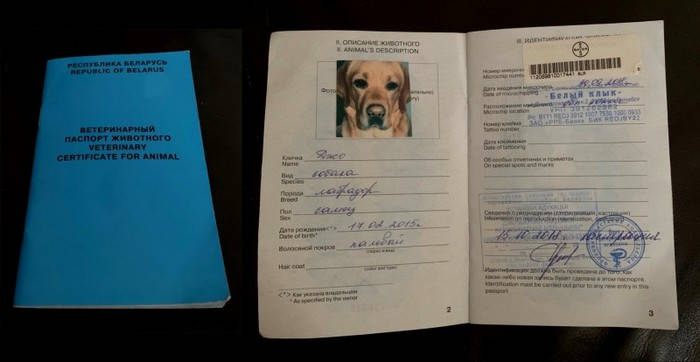
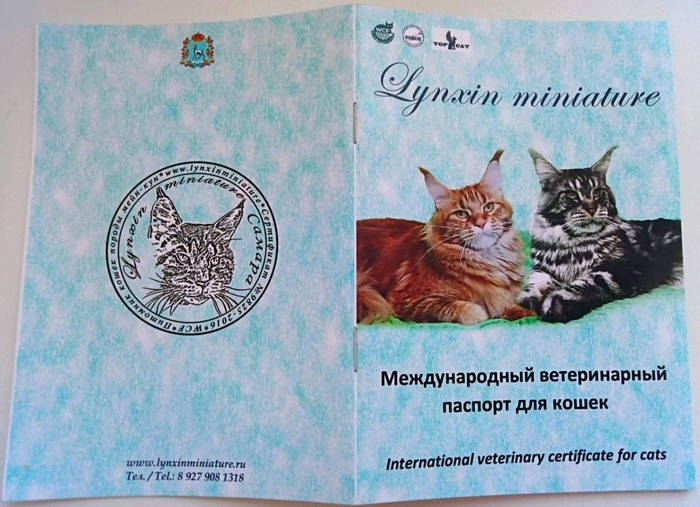
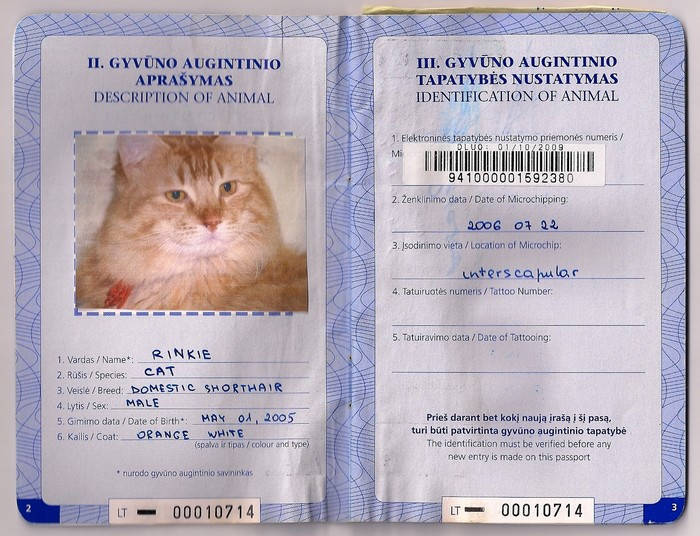
- When traveling abroad, you must vaccinate your cat against rabies and other diseases at least 30 days before departure.
- For ease of communication, it is better to include several contact numbers in the passport.
- If the veterinary passport was lost, you can restore it by vaccinations made in the last year.
- In the passport photo, the cat must be more than one year old.
Vaccination information.
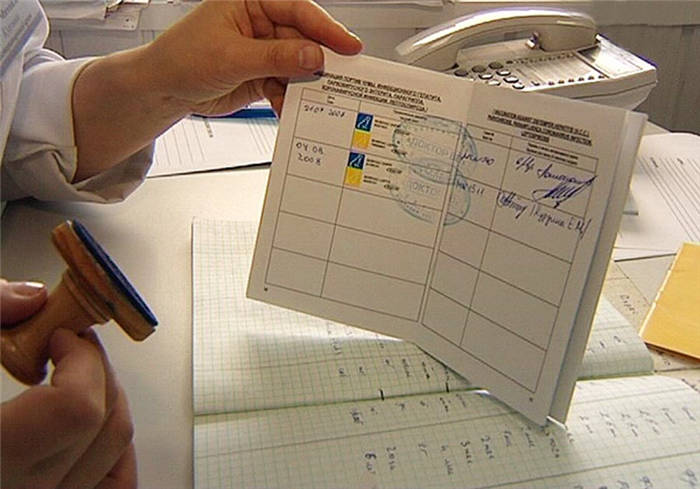
Next is a section with rabies vaccination records. Each mark contains the date, type of vaccine (sticker), stamp with the vaccine series number, vet's signature, and clinic seal.
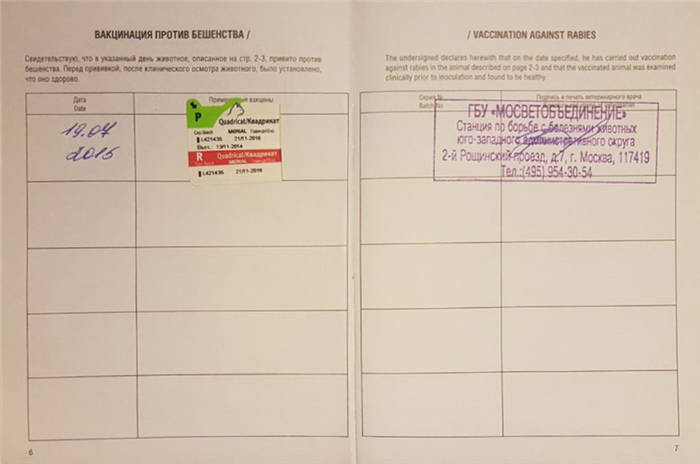
The section on basic vaccination contains information on vaccinations against panleukopenia, rhinotracheitis and calcivirosis; it is filled out similarly to the previous section.
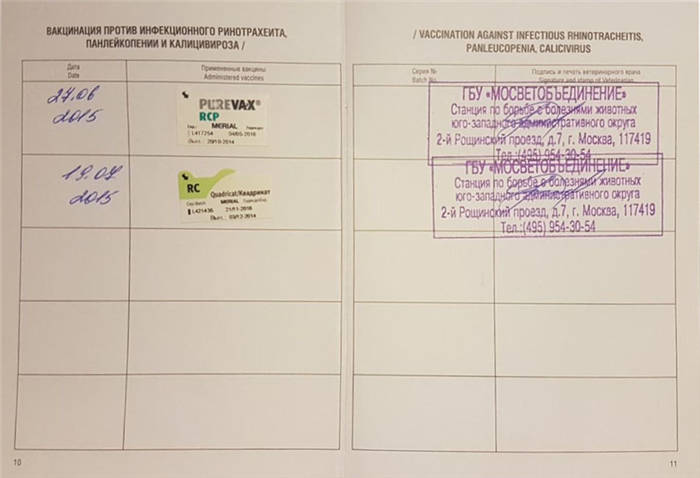
Special sections about deworming and treatment against fleas and ticks are marked and stickers of preparations are affixed. This can be done either by the owner or the doctor.
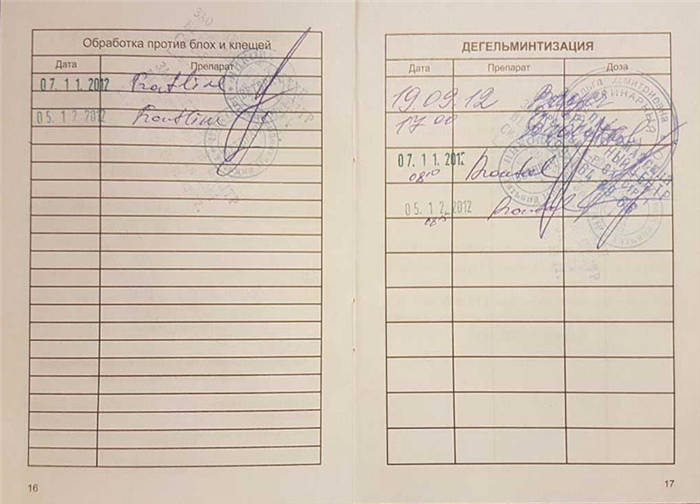
Our passport is filled out by our doctor. But microchips are mandatory only in the EU and America. And in addition to the basic information about the vaccination, all operations and illnesses the cat underwent and the method of treatment and doses are given.
Not true, some countries in Southeast Asia also require a chip and a note in the passport with the chip when transporting the pet.
Having a photo on the veterinary passport is not a requirement.
To enter the country, you must first comply with the rules governing the entry of animals into a particular country (in your case, France).
Detailed information on the transportation of animals and conditions of entry into France, you need to clarify with the veterinary service of the airport, the municipal veterinary station and the airline by which you are flying.
We recommend that you do everything in advance to take all the necessary steps to ensure that your trip goes smoothly. We wish you a pleasant trip 🙂Date of registration
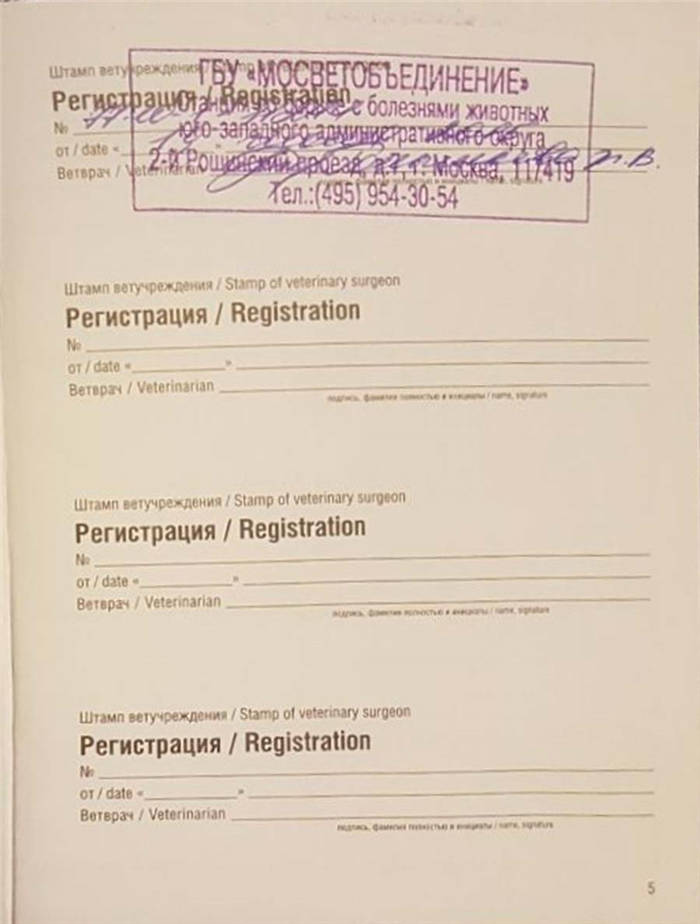
The second page is reserved for the animal's registration marks at the veterinary clinic, which are made within 1 month from the date of purchase for adult animals, and for puppies and kittens when they reach 3 (2)-months of age.
Re-registration is done after 1 year from the date of registration and then no later than 2 months from the date of expiration. Remember, re-registration notes must be made by a veterinarian – all are accompanied by the doctor's signature and clinic stamp with the license number.
Vaccination information
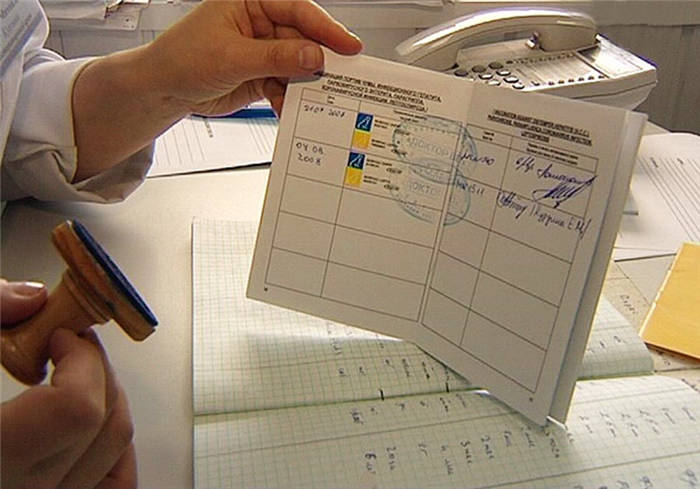
Next is the section with the rabies vaccination marks. Each mark contains the date, type of vaccine (sticker), stamp with the vaccine series number, the veterinarian's signature, and the clinic's seal.
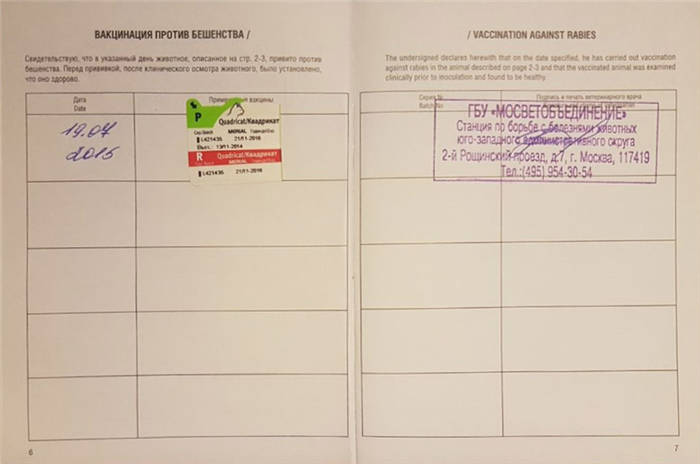
The section on basic vaccination contains information on vaccinations against panleukopenia, rhinotracheitis and calciviruses, which is filled out similarly to the previous section.
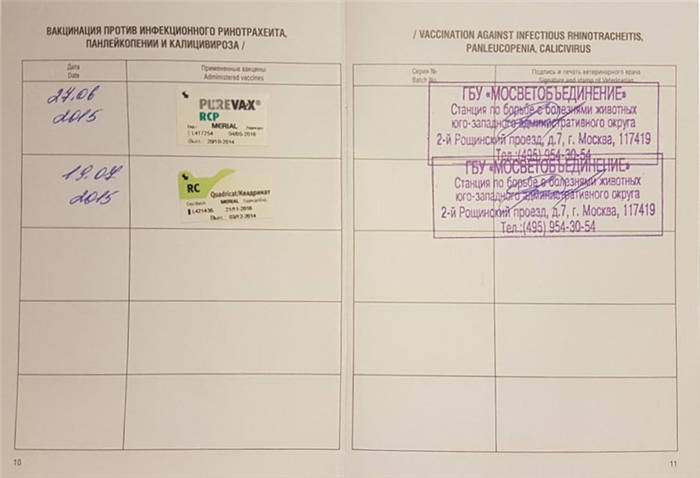
Special sections on dehelminthization and treatment against fleas and ticks are marked and medication stickers are affixed. This can be done either by the owner or the doctor.
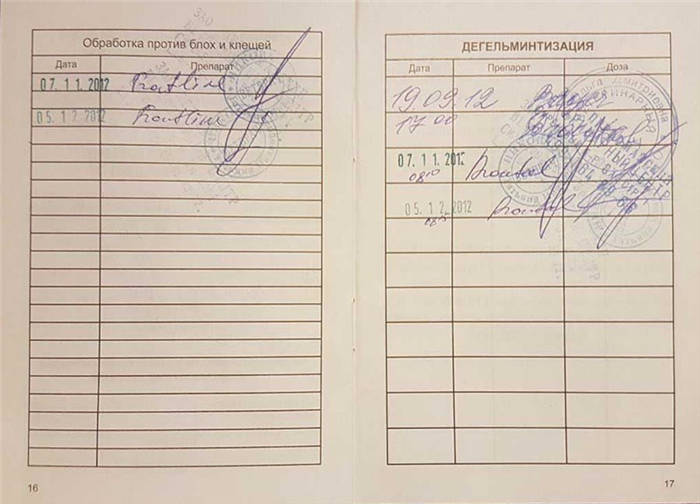
Our passport is filled out by our doctor. But microchips are mandatory only in the EU and America. And in addition to the basic information about the vaccination, all operations and illnesses the cat underwent and the method of treatment and doses are given.
Not true, some countries in Southeast Asia also require a chip and a note in the passport with the chip when transporting the pet.
Having a photo on the veterinary passport is not a requirement.
To enter a country, the rules governing the entry of animals into a particular country (in your case France) must first be followed.
For detailed information on the transportation of pets and conditions of entry into France, you should check with the veterinary service of the airport, the municipal veterinary station and the airline you are flying with.
We recommend doing everything in advance to take all the necessary steps to ensure that your trip goes smoothly. We wish you a pleasant trip 🙂






